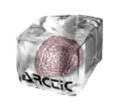Difference between revisions of "2010 WinterProject Week CorticalThicknessAnalysis"
From NAMIC Wiki
| Line 42: | Line 42: | ||
<h3>Progress</h3> | <h3>Progress</h3> | ||
| + | NITRC: | ||
| + | *Elderly atlas now publicly available | ||
| + | *MRML scenes added for each available atlas: [http://www.nitrc.org/projects/unc_brain_atlas/ human brain atlas] and [http://www.nitrc.org/projects/primate_atlas/ primate brain atlas] | ||
| + | |||
| + | |||
| + | ARCTIC: | ||
| + | *Source code updated | ||
| + | *Works again as a Slicer3 extension | ||
| + | |||
| + | |||
| + | Population analysis: | ||
| + | *Meetings with Wendy Plesniak, Daniel Marcus, Timothy Olsen, John Paulett, Steve Pieper, Julien Jomier, Martin Styner, Corentin Hamel | ||
| + | *Better understanding of how population analysis could be performed within Slicer3, using BatchMake and XNAT | ||
| + | |||
| + | |||
| + | Mesh based cortical thickness pipeline: | ||
| + | *Meeting with Josh Cates and Martin Styner regarding particle correspondence (usage and future options) | ||
| + | *Applying individual pipeline to small pediatric dataset | ||
</div> | </div> | ||
Revision as of 16:23, 8 January 2010
Home < 2010 WinterProject Week CorticalThicknessAnalysisKey Investigators
- UNC: Clement Vachet, Cedric Mathieu, Ipek Oguz, Marc Niethammer, Heather Cody Hazlett, Martin Styner
- Isomics: Steve Pieper
Objective
We would like to create end-to-end applications within Slicer3 allowing individual and group analysis of regional (voxel-based) and local (mesh-based) cortical thickness.
Such a workflow applied to the young brain (2-4 years old) is our goal in order to start a longitudinal study of early brain development in autism (UNC DBP).
See our Roadmap for more details.
Approach, Plan
Our approach is described in the following wiki pages:
Our plan for the project week is to follow-up on the local cortical thickness pipeline and apply it to a small pediatric dataset.
Progress
NITRC:
- Elderly atlas now publicly available
- MRML scenes added for each available atlas: human brain atlas and primate brain atlas
ARCTIC:
- Source code updated
- Works again as a Slicer3 extension
Population analysis:
- Meetings with Wendy Plesniak, Daniel Marcus, Timothy Olsen, John Paulett, Steve Pieper, Julien Jomier, Martin Styner, Corentin Hamel
- Better understanding of how population analysis could be performed within Slicer3, using BatchMake and XNAT
Mesh based cortical thickness pipeline:
- Meeting with Josh Cates and Martin Styner regarding particle correspondence (usage and future options)
- Applying individual pipeline to small pediatric dataset
References
- I. Oguz, M. Niethammer, J. Cates, R. Whitaker, T. Fletcher, C. Vachet, and M. Styner, Cortical Correspondence with Probabilistic Fiber Connectivity, Information Processing in Medical Imaging, IPMI 2009, LNCS, in print.
- H.C. Hazlett, C. Vachet, C. Mathieu, M. Styner, J. Piven, Use of the Slicer3 Toolkit to Produce Regional Cortical Thickness Measurement of Pediatric MRI Data, presented at the 8th Annual International Meeting for Autism Research (IMFAR) Chicago, IL 2009.
- C. Mathieu, C. Vachet, H.C. Hazlett, G. Geric, J. Piven, and M. Styner, ARCTIC – Automatic Regional Cortical ThICkness Tool, UNC Radiology Research Day 2009 abstract
- C. Vachet, H.C. Hazlett, M. Niethammer, I. Oguz, J.Cates, R. Whitaker, J. Piven, M. Styner, Mesh-based Local Cortical Thickness Framework, UNC Radiology Research Day 2009 abstract





